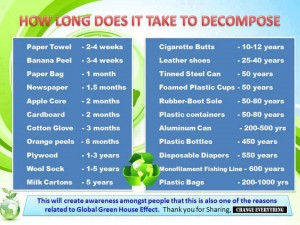This is a photo of the Brooklyn Battery Tunnel in NYC — FLOODING. New York Governor Cuomo calls this another 100 year flood that happens every two years now. Is this the new normal?
Continue reading... →NEWSFLASH! Rats fed a lifetime diet of Monsanto’s genetically modified corn or exposed to its top-selling weedkiller Roundup suffered tumours and multiple organ damage, according to a French study published on Wednesday.
Continue reading... →
It seems that the lowly little honeybee has beat us to it and found the Fountain of Youth. New research at Arizona State University (ASU) has revealed that older honey bees can reverse age-related damage to their brains by resuming caretaking responsibilities usually tasked by younger bees. The study was published in the science journal Experimental Gerontology, and conducted by an international team from ASU and the Norwegian University of Life Sciences.
In order to discover this amazing result, the team of scientists first had to trick the older bees—who spend most of their time out of the nest foraging—into returning home and doing social tasks. They found that just this simple change in daily routine led to a big difference in the molecular structure of the bees’ brains.
It is, perhaps, the greatest failure of collective leadership since the first world war. The Earth’s living systems are collapsing, and the leaders of some of the most powerful nations – the United States, the UK, Germany, Russia – could not even be bothered to turn up and discuss it. Those who did attend the Earth summit in Rio last week solemnly agreed to keep stoking the destructive fires: sixteen times in their text they pledged to pursue “sustained growth“, the primary cause of the biosphere’s losses.
The efforts of governments are concentrated not on defending the living Earth from destruction, but on defending the machine that is destroying it. Whenever consumer capitalism becomes snarled up by its own contradictions, governments scramble to mend the machine, to ensure – though it consumes the conditions that sustain our lives – that it runs faster than ever before.
The thought that it might be the wrong machine, pursuing the wrong task, cannot even be voiced in mainstream politics. The machine greatly enriches the economic elite, while insulating the political elite from the mass movements it might otherwise confront. We have our bread; now we are wandering, in spellbound reverie, among the circuses.
We have used our unprecedented freedoms – secured at such cost by our forebears – not to agitate for justice, for redistribution, for the defence of our common interests, but to pursue the dopamine hits triggered by the purchase of products we do not need. The world’s most inventive minds are deployed not to improve the lot of humankind but to devise ever more effective means of stimulation, to counteract the diminishing satisfactions of consumption. The mutual dependencies of consumer capitalism ensure that we all unwittingly conspire in the trashing of what may be the only living planet. The failure at Rio de Janeiro belongs to us all.
It marks, more or less, the end of the multilateral effort to protect the biosphere. The only successful global instrument – the Montreal Protocol on substances that deplete the ozone layer – was agreed and implemented years before the first Earth Summit in 1992. It was one of the last fruits of a different political era, in which intervention in the market for the sake of the greater good was not considered anathema, even by the Thatcher and Reagan governments. Everything of value discussed since then has led to weak, unenforceable agreements, or to no agreements at all.
Continue reading... → Look at this the next time you throw something “away”. Where is away anyway?
Look at this the next time you throw something “away”. Where is away anyway?
The Paleaku Peace Gardens Sanctuary in Kona, Hawaii, USA, is a meticulously planned garden spanning about 30 meters provides a relatively accurate map of our Milky Way Galaxy. Different plants depict stars, globular clusters, and even nebulas. Many bright stars visible in Earth’s night sky are depicted on leaves surrounding the marked location of the Sun. Plant rows were placed to represent arms of our Galaxy, including the Sun’s Orion Arm, the impressive Sagittarius Arm, and the little discussed Norma Arm. A small bar runs through our Galaxy’s center, while a fountain has been built to represent the central black hole.
Is this amazing or what?
Continue reading... →Global warming isn’t a prediction. It is happening. That is why I was so troubled to read a recent interview with President Obama in Rolling Stone in which he said that Canada would exploit the oil in its vast tar sands reserves “regardless of what we do.”
If Canada proceeds, and we do nothing, it will be game over for the climate.
Continue reading... →For the love of a tree,
she went out on a limb.
For the love of the sea,
she rocked the boat.
For the love of the earth,
she dug deeper.
For the love of community,
she mended fences.
For the love of the stars,
she let her light shine.
Researchers at Beelogics, a leading bee research firm, identified pesticides as a leading contributor to declining bee populations. In late September of 2011, Monsanto, a major producer of genetically modified foods, bought the Beelogics firm for an undisclosed sum. It now seems likely that Monsanto’s funding will manipulate research to point the blame away from chemicals used in GMO food production.
The bee decline affects all U.S. citizens. Bees are responsible for pollinating 1/3 of U.S. crops and are essential to sustaining our ecological lifespan. It is vital that researchers can identify the true cause of the decline so that responsible citizens can learn how to help the bee population.
If the USDA uses Monsanto-funded research from Beelogics, it will essentially be sacrificing scientific integrity for corporate interests. Please support the truth of scientific research and tell the USDA not to use research funded by Monsanto.
Continue reading... →






